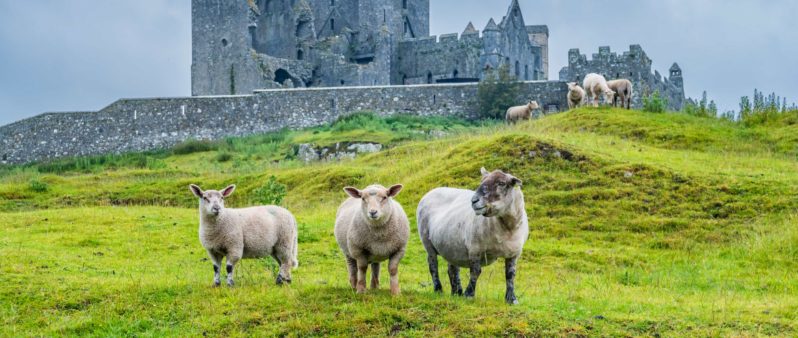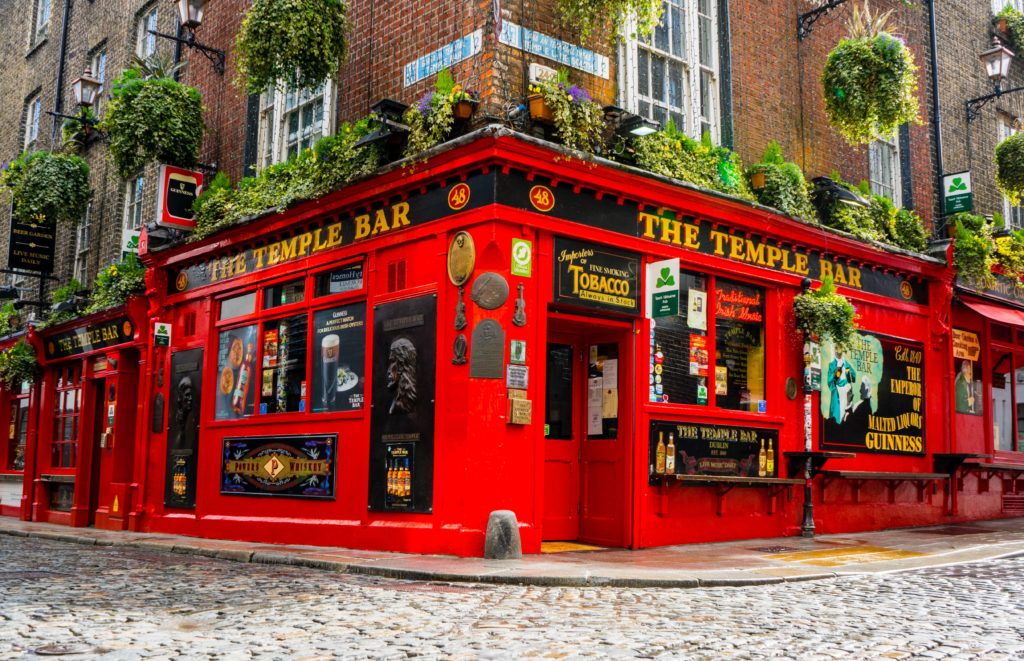
Learn & Listen to the Irish Language (Gaeilge)
Well, it’s March, and you know what that means! Break out your “Kiss Me, I’m Irish” t-shirts and throw some corned beef & cabbage on the stove because it’s time for St. Patrick’s Day! Though many of you might toast your mates with sláinte and céad míle fáilte, you may not know much about the history of the Irish language, or how interesting and complex it is. So let’s pour a pint of Guinness and explore!
You may have heard the Irish language referred to as Irish Gaelic, but Irish people usually don’t call their language Gaelic, and they definitely don’t call it Irish Gaelic. They call it Irish or Gaeilge and there are three main dialects; Munster, spoken in the South, Connacht, spoken around Connemara and beyond, and Ulster, mostly spoken around Donegal in the North.
Learn Irish Accents
Here’s an amusing example of someone doing accents from the different regions of Ireland:
A History of the Irish Language
Celtic Language Origins
Along with Welsh, Scottish Gaelic, Breton, Cornish, and Manx, Irish is a Celtic language, meaning that it originated from the ancient Celtic people who once populated much of Europe, from the Iberian peninsula to the Black Sea. Most of the Celts on the continent were assimilated by the expansion of the Roman Empire beginning around 200 BCE, and their various languages became extinct.
The Celts who migrated to the British Isles were able to preserve and evolve their languages, and the oldest form yet discovered is known as Archaic or Primitive Irish. Evidence of the language can be found on the Ogham Inscriptions, an alphabet that dates back to the early 4th century CE, or earlier.
Old Irish, Middle Irish, and Norse
Some Primitive Irish speakers eventually migrated to Scotland and the Isle of Mann where their language evolved into Scottish Gaelic and Manx. The Irish who stayed put eventually started speaking and writing Old Irish, which was in use between the 7th & 10th centuries.
After that is Middle Irish, which began to show complexities like dialectal variation. Sometime around 800 CE, the Vikings began raiding and settling in Ireland, which resulted in some Norse vocabulary infiltrating the Irish language. For example, the Irish word pingin, meaning “penny,” is very similar to the Norse word peninga, meaning, “money.” And margadh, is quite similar to the Norse word markaður, both of which mean “market.”
Norman Invasion of Ireland
Not wishing to be outdone by the Vikings, the Normans invaded Ireland in 1169, and of course brought Norman-French and English with them, both of which became common languages. Though eventually Irish won out as the most commonly spoken language, Norman-French influenced Irish in many ways, especially in the southern dialects. Some borrowed Norman vocabulary words include liosta, meaning, “list,” from the Norman French, liste, and aidm, meaning, “aim,” from Norman French aesmer.
Classical Irish
Following Middle Irish was Classical Irish, a written language used to write texts and religious manuscripts between 1200-1700. Again, Classical Irish was a written language and wasn’t used for speaking. Most people at this time were speaking Early Modern Irish which has since evolved into the Irish that most Irish speaking people use today.
Effects of the Great Famine on the Irish Language
During the time of English rule in the 1800s, the English language began to edge out Irish, and this was unfortunately assisted by the Great Famine which affected a great number of Irish speakers.
Over two million people either died or fled the country at this time, leaving only a small minority of Irish speakers. To make matters worse for the language, the National Schools prohibited the teaching and use of Irish in favor of the English language until 1871.
The Irish Language Today
Towards the end of the 19th century, much work was put into reviving the Irish language. In 1958, the Official Standard, or An Caighdeán Oiligiúil, was published which united the various dialects. Irish is now the national and first official language of the Republic of Ireland and is a required subject for study in all schools.
Characteristics and Quirks of the Irish Language
One defining characteristic of Irish is that unlike many languages, there are no separate words meaning, “to have,” or, “to want.” For example, instead of saying that you have a car, you’d say, “Tá carr agam.” Literally, “Is car at me.” Instead of saying, “I want a cup of tea.” you’d say, “Tá cupán tae uaim.” literally, “Is a cup of tea from me,” implying that though the cup of tea is far from you, you’d vastly prefer it if it were near you instead.
Similarly, mood-related words generally involve a mood being upon you. For example, instead of saying that you’re hungry, you’d say, “Tá ocras orm.” Literally, “Is hunger on me.”
Another quirk of the language is that there are no native words for, “yes,” “no,” or, “hello.” “Yes” and “no” are expressed by repeating the verb as an affirmative or negative. For example, if you asked someone in Irish, “Are you going?” they will answer you by saying, “Tá mé ag dul.” Literally, “Is me I go.”
This is why when you talk to a native Irish speaker in English and ask them that same question, they may answer with something like, “I’ll go, yeah.” or “I won’t go, no.” As for saying hello, most greetings in Irish are weather-related or religious in nature, for example, dia duit, which means, “God be with you.”
Not unlike the romance languages such as Spanish, Irish has two separate ways to express the verb, “to be.” One is used for things that are intrinsic and permanent, and the other is used for more temporary conditions.
Another feature of the Irish language is that there are broad vowels and slender vowels, each with different pronunciations. If a consonant has a broad vowel before it, the rule is that it needs to have another broad vowel after it, the same goes for slender vowels.
Listen to the Irish Language
Here’s an example of someone speaking Irish:
Counting in Irish
Using numbers in Irish is very complex, with a set of numbers for calculations like time telling or phone numbers, a set for indicating what order things are coming in, another set for counting non-human nouns, and a fourth set of numbers for counting humans. That won’t get confusing at all to a non-native speaker!
Learn to Speak Irish
As you can see, the Irish language is worth more investment than just your annual St. Patrick’s Day toast. Impress your friends this St. Patrick’s Day by learning to speak Irish using the Pimsleur app: https://www.pimsleur.com/learn-irish/subscription-all-access

Special thanks to my sweet friend Kevin Mulkerrins, who shared some very helpful information with me about Irish, and who speaks in the Connacht dialect. Go raibh maith agat!
Cover photo credit: Benedek / iStock
No Comments for "The Irish Language – The History and Quirks of Gaeilge"